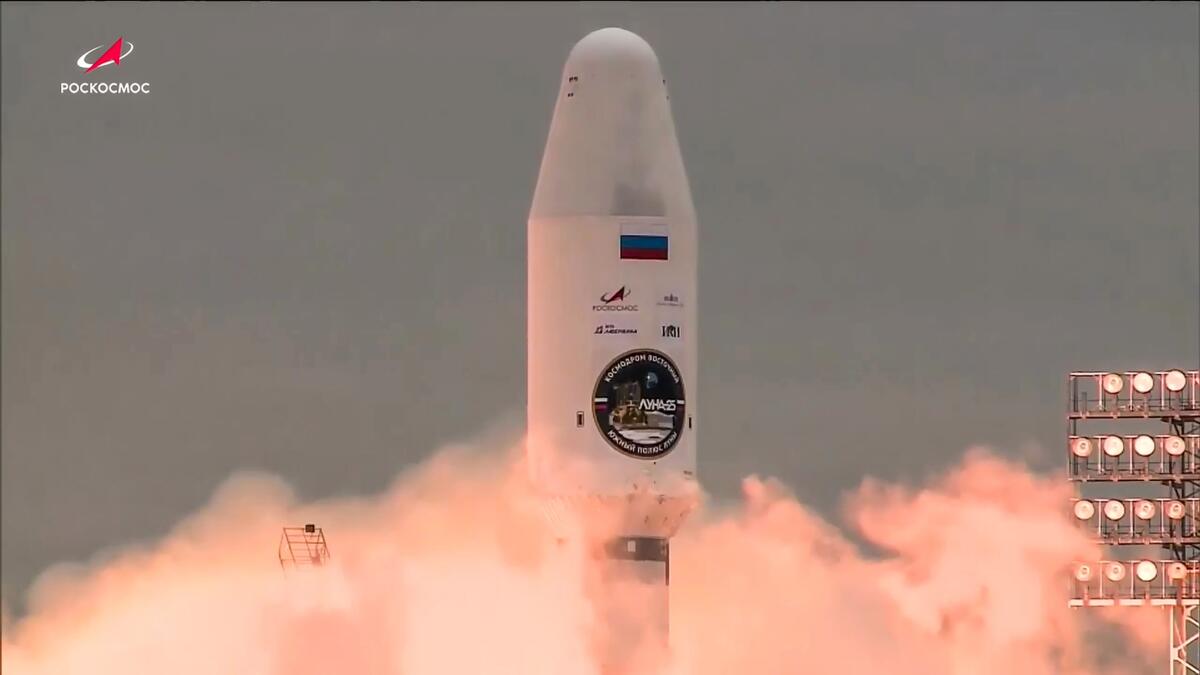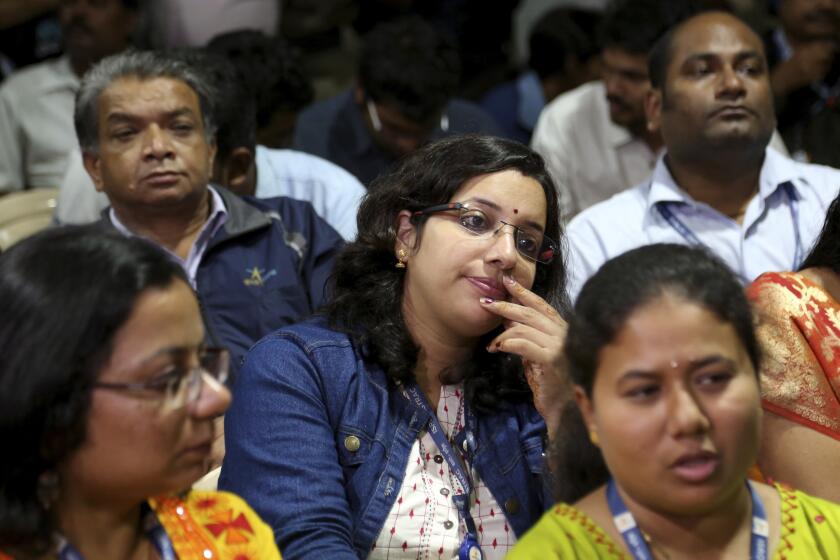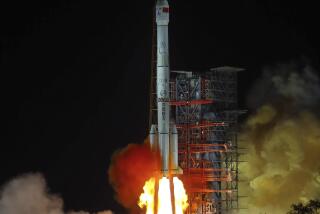A rocket with a lunar landing craft blasts off on Russia’s first moon mission in nearly 50 years

- Share via
TALLINN, Estonia — A rocket carrying a lunar landing craft blasted off Friday on Russia’s first moon mission in nearly 50 years, racing to land on Earth’s satellite ahead of an Indian spacecraft.
The launch from Russia’s Vostochny spaceport in the Far East of the Luna-25 craft to the moon is Russia’s first since 1976 when it was part of the Soviet Union.
The Russian lunar lander is expected to reach the moon on Aug. 23, about the same day as an Indian craft which was launched on July 14. The Russian spacecraft will take about 5½ days to travel to the moon’s vicinity, then spend three to seven days orbiting at about 62 miles before heading for the surface.
Only three governments have managed successful moon landings: the Soviet Union, the United States and China. India and Russia are aiming to be the first to land at the moon’s south pole.
Roscosmos, Russia’s space agency, said it wants to show Russia “is a state capable of delivering a payload to the moon,” and “ensure Russia’s guaranteed access to the moon’s surface.”
The country will focus on building its own orbiting outpost, its new space chief said amid high tensions between Moscow and the West over the fighting in Ukraine.
“Study of the moon is not the goal,” said Vitaly Egorov, a popular Russian space analyst. “The goal is political competition between two superpowers — China and the USA — and a number of other countries which also want to claim the title of space superpower.”
Sanctions imposed on Russia after it invaded Ukraine make it harder for it to access Western technology, impacting its space program. The Luna-25 was initially meant to carry a small moon rover but that idea was abandoned to reduce the weight of the craft for improved reliability, analysts say.
“Foreign electronics are lighter, domestic electronics are heavier,” Egorov said. “While scientists might have the task of studying lunar water, for Roscosmos the main task is simply to land on the moon — to recover lost Soviet expertise and learn how to perform this task in a new era.”
The Luna-25 launched flawlessly from the Vostochny Cosmodrome in Russia’s far east, according to video feed from Roscosmos.
Russian President Vladimir Putin’s KGB years in East Germany offer a window into his crackdown on protests, war on Ukraine and yearning for empire.
The spaceport is a pet project of Russian President Vladimir Putin and is key to his efforts to make Russia a space superpower and move Russian launches from the Baikonur Cosmodrome in Kazakhstan.
A previous Indian attempt to land at the moon’s south pole in 2019 ended when the lander crashed into the moon’s surface.
The lunar south pole is of particular interest to scientists, who believe the permanently shadowed polar craters may contain water. The frozen water in the rocks could be transformed by future explorers into air and rocket fuel.
The lander module from India’s moon mission was located on the lunar surface on Sunday, one day after it lost contact with the space station, and efforts are underway to try to establish contact with it, the head of the nation’s space agency said.
“The moon is largely untouched and the whole history of the moon is written on its face,” said Ed Bloomer, an astronomer at Britain’s Royal Observatory, Greenwich. “It is pristine and like nothing you get on Earth. It is its own laboratory.”
The Luna-25 is to take samples of moon rock and dust. The samples are crucial to understanding the moon’s environment ahead of building any base there, “otherwise we could be building things and having to shut them down six months later because everything has effectively been sand-blasted,” Bloomer said.
Heintz reported from Tallinn, Burrows from London. Associated Press writer Marcia Dunn in Cape Canaveral, Fla. contributed to this story.
More to Read
Sign up for Essential California
The most important California stories and recommendations in your inbox every morning.
You may occasionally receive promotional content from the Los Angeles Times.












